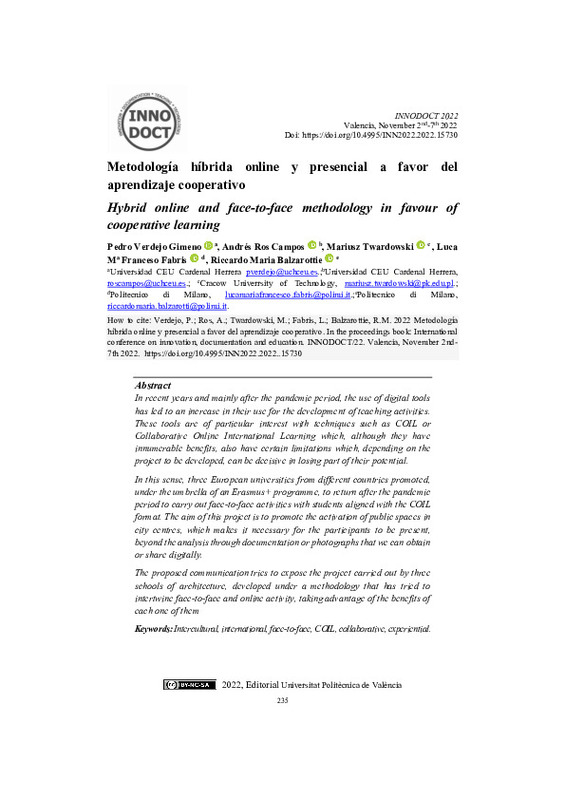JavaScript is disabled for your browser. Some features of this site may not work without it.
Buscar en RiuNet
Listar
Mi cuenta
Estadísticas
Ayuda RiuNet
Admin. UPV
Metodología híbrida online y presencial a favor del aprendizaje cooperativo
Mostrar el registro completo del ítem
Verdejo, P.; Ros Campos, A.; Twardowski, M.; Fabris, LM.; Balzarottie, R. (2023). Metodología híbrida online y presencial a favor del aprendizaje cooperativo. En Proceedings INNODOCT/22. International Conference on Innovation, Documentation and Education. Editorial Universitat Politècnica de València. 235-243. https://doi.org/10.4995/INN2022.2022.15730
Por favor, use este identificador para citar o enlazar este ítem: http://hdl.handle.net/10251/193079
Ficheros en el ítem
Metadatos del ítem
| Título: | Metodología híbrida online y presencial a favor del aprendizaje cooperativo | |
| Autor: | ||
| Fecha difusión: |
|
|
| Resumen: |
[ES] Estos últimos años y principalmente tras el periodo pandémico, la extendida utilización de las herramientas digitales ha motivado un incremento de su uso para el desarrollo de actividades docentes. Estas herramientas ...[+]
[EN] In recent years and mainly after the pandemic period, the use of digital tools has led to an increase in their use for the development of teaching activities. These tools are of particular interest with techniques ...[+]
|
|
| Palabras clave: |
|
|
| Derechos de uso: | Reconocimiento - No comercial - Compartir igual (by-nc-sa) | |
| ISBN: |
|
|
| Fuente: |
|
|
| DOI: |
|
|
| Editorial: |
|
|
| Versión del editor: | http://ocs.editorial.upv.es/index.php/INNODOCT/INN2022/paper/view/15730 | |
| Título del congreso: |
|
|
| Lugar del congreso: |
|
|
| Fecha congreso: |
|
|
| Tipo: |
|









